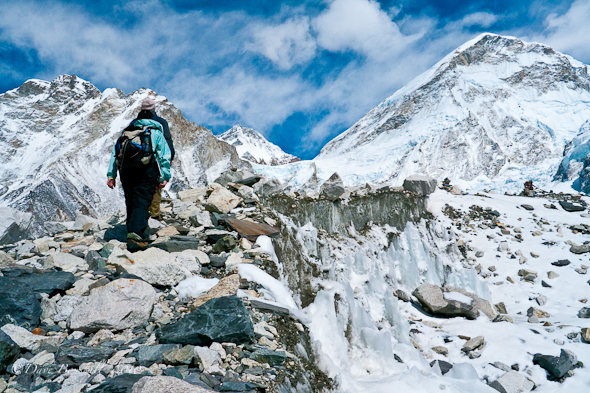Renowned for its awe-inspiring mountain summits &
friendliness of its occupants, the Everest province is undoubtedly the
most popular trekking routes for tourists in Nepal. While most of the
trails through the mountains are difficult, there’re many places to rest
& relish a meal all through way. Most Sherpas here understands
basic English, so communication shouldn’t be an issue at all. Trekking
in Nepal is incomplete if you forgot to add a trekking trip to the
Eveerest base camp.

While Everest base camp trekking
is possible all through the year, the most favorable time to tour are
from the starting of March to mid May and from the starting of September
to mid-November. The winter season tend to be really cold & snow
may make it tough for trek higher than Tengboche and lodges also maybe
closed above this elevation. On the other hand, summers are wet and the
exceptional summits are lost in the dense clouds. April & early May
is an excellent time to witness the hedgerows & tress stuffed into
blossom, with Rhododendron, in specific, integrating an exceptional
spray of colors to the scenery. Nevertheless, dust from the plains of
India throughout the spring routinely offers less than perfect condition
for clear mountain panoramas. The sights are much improved following
the summer monsoon have cleared the surrounding of dust particles, but
the days are cooler and shorter.
At Everest Base
Camp, climbers will often spend 4 - 8 weeks, acclimatizing to the
altitude. During that time, the "Icefall Doctors" will set up ropes and
ladders in the notoriously unstable Khumbu Icefall. Seracs, crevasses
and shifting blocks of ice make the icefall one of the most dangerous
sections of the route. Many climbers and Sherpas have been killed in
this section. To reduce the risk, climbers will usually begin their
ascent well before sunrise when the freezing temperatures glue ice
blocks in place.
The lodges and teahouses along
Everest Base camp trail cook a variety of food for breakfast, lunch and
dinner. Although the taste of the food may not be same as that of cities
because of remoteness and supplies are not in easy access. The higher
you go the fewer varieties you will get but still you can enjoy plenty
of cuisines like Nepali, Tibetan, Continental, Italian, and Indian.
Pizza, pasta, noodles, potatoes, eggs, daal bhat (boiled rice and lentil
soup), Tibetan bread, tsampa porridge, muesli, soup, fresh vegetables
(variety depends on the season) and even some desserts like apple pies,
pancakes can be enjoyed.

If you are not just satisfied with your Everest base camp trek, you can add Annapurna base camp trek to your itinerary for more adventure.
No comments:
Post a Comment